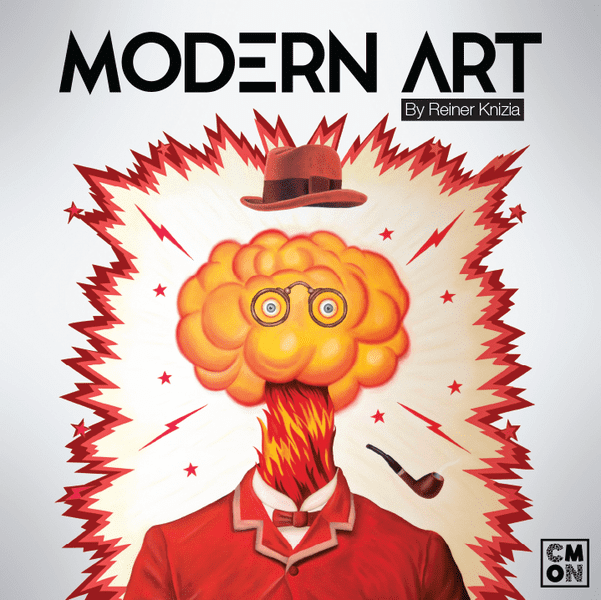Modern Art (1992) Board Game
Modern Art is a classic board game released in 1992 by designer Reiner Knizia. It is a card game that revolves around the world of art auctions, where players act as art dealers buying and selling paintings by various artists. The game has received critical acclaim for its unique gameplay mechanics and strategic depth, making it a favorite among board game enthusiasts.
Game Components of Modern Art
How To Setup Modern Art
To set up Modern Art, each player receives $100 million in money tokens, which are placed behind their player screen. Each player is also dealt a hand of cards featuring modern art pieces. The game board is prepared to track the value of each artist’s paintings. The setup is quick and straightforward, allowing players to dive into the game swiftly.
Gameplay Mechanics and Game Objective
Mechanics
Game Objective
The objective is to accumulate the most money by buying and selling art pieces. Players take turns putting art pieces up for auction, and the winner pays the auctioneer. The value of the art pieces is determined by their popularity at the end of each round, with the top three artists’ pieces gaining significant value.
Player Experience
Modern Art is a game of strategic bidding, speculation, and social interaction. Players must navigate the volatile art market, where the value of paintings fluctuates based on their popularity. Each round, players bid on art pieces, trying to buy low and sell high. The game encourages role-playing, as players can hype up their art pieces to attract higher bids. The atmosphere shifts from casual banter to intense negotiations as the stakes rise over the four rounds.
Pros
Cons
Personal Thoughts on Modern Art
Modern Art is ideal for those who enjoy strategic bidding games, economic simulations, and social interactions. It is particularly suited for experienced board game players who appreciate complex mechanics and psychological gameplay. However, it can also be enjoyed by more casual players who are willing to learn and adapt to the game’s dynamics. The game’s ability to balance mathematical calculations with social bluffing makes it a standout in the world of board games, ensuring it remains a favorite among many gamers.
We are supported by our audience. When you purchase through links on our site, we may earn an affiliate commission, at no extra cost for you. Learn more.

